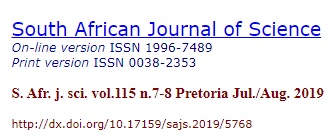
Jacques Bezuidenhout
Faculty of Military Science, Stellenbosch University, Stellenbosch, South Africa
ABSTRACT
The geology of an area can be used as a predictor for radon potential. Granite rock typically contains a high concentration of uranium and subsequent elevated emanation of radon gas. The geology of the western part of the Western Cape Province in South Africa is dominated by granite bedrock but very few studies on radon have been conducted in this area. Uranium concentrations were consequently measured on a large granite hill in the Saldanha Bay area of the Western Cape and a relationship between indoor radon and uranium concentrations was used to model radon potential on the outcrop. Results from granite rich environments in India were modelled in order to extract a relationship between indoor radon concentrations, radon exhalation rates and uranium concentrations. Radon exhalation rates greater than 0.35 Bq/m2h were predicted and estimated indoor radon concentrations in excess of 400 Bq/m3 were also predicted for the hill. The modelled results were compared with indoor radon measurements taken in the town of Paarl in the Western Cape, which sits on the same granite bedrock formation. The predicted radon potential correlated well with the physical measurements.
SIGNIFICANCE:
•Extensive in-situ uranium measurements were conducted by utilising a self-developed gamma-ray detection instrument (the GISPI) by means of a unique method.
